We left Finca La Rosendo in Argentina’s Mendoza province on March 17 with just over two weeks to travel 2,100 miles northwest to Cusco, Peru, in time for our reservations to hike the Inca Trail to Machu Picchu. We planned to make a few stops along the way, first in Mendoza city, then crossing west to Chile with stops in Santiago and San Pedro de Atacama, and a short stay in Arequipa Peru–all places with lots to see and do! We had a lot of miles to cover, so while we love to travel overland and see the countryside as it changes, the plan would only work if we took at least a couple of flights.
To get a visual on our route, I’ve marked this phase of the trip with green pins on our home page map http://BobandLorrie.xyz If you click on the pins, you’ll see a few of our pictures from each place. And, as always, there are more pictures in our website’s photo gallery.
We left San Rafael, and after a few hours looking at sparsely populated arid landscape from the window of our bus, we arrived in the city of Mendoza (capital of the province with the same name). Hungry, we went out on the street at 10pm looking for dinner. What a surprise to find the streets and sidewalks jam-packed with young people drinking beer! Oops! We forgot it was St. Patrick’s Day….and who knew there were so many Irish descendants in Mendoza?! We were also surprised to find a vibrant microbrewery scene here too–right in the capital of Argentina’s Malbec country! Although we were only in Mendoza for a day, we were fortunate to catch a terrific retrospective exhibition of Ecuadorian painter Oswaldo Guayasamin, whose paint and line figures depict racism, poverty and political oppression of indigenous peoples. It’s also very clear from the artworks, as well as from his writings, that Guayasamin really loved his mother.:-)

Our bus ride over the Andes from Mendoza to Santiago, Chile, brought back memories of transiting that pass in 1984, the last time we were in Chile together. It’s really a spectacular way to enter the country, first climbing through vineyards, followed by scrubby desert and then crossing the border surrounded by high Andean peaks before descending to Santiago through golden hills.
We rented a nice apartment in the Providencia district of Santiago and settled in to enjoy the city for a few days. We chose Providencia as it is located near several vibrant neighborhoods, verdant riverside parks, and national museums. We enjoyed visiting La Chascona, the home of Nobel-prize winning Chilean poet Pablo Neruda. The Museum of Pre-Columbian Art is terrific, with an extensive collection from Central and South America going back thousands of years. Also terrific, and more sobering, is the Museum of Memory and Human Rights that documents in great detail the 1973 coup and human rights abuses of the military junta that ruled Chile until 1990 under General Augusto Pinochet. Our visit to Santiago brought back so many memories and feelings. In December 1984, we stayed in a cheap pension just half a block from the central Plaza de Armas and the national cathedral. We remember waking up at night when the absolute silence of the military curfew was broken by the startling noise of someone running down the street before escaping into a nearby house. Many of Chile’s writers, artists and musicians were tortured and killed during and after the coup (including folk singer Victor Jara). Others escaped to live in exile for almost two decades. We somehow managed to get our hands on some cassette tapes when we were living in Paraguay and would listen to the songs covertly, with the volume turned down as low as possible, because General Alfredo Stroessner ruled Paraguay ruthlessly in those days. Visiting the museum immersed us once again in the trauma of this period for the Chilean people, also felt in so many other Latin American countries similarly struggling under military dictatorships.
Flash forward to 2018, Santiago struck as a clean, modern, and beautiful city, with many sumptuous intellectual bookstores. And, needless to say, the nights are much more lively than they were in 1984. We ate one of the best meals of our lives at Peumayen Ancestral Food http://Peumayenchile.cl ($88, including a good bottle of wine) (apologies to our friends at 2Amy’s). We heard some great jazz in a local neighborhood club and attended a choral tribute to Chilean folk singer Violeta Parra at the national cultural center. And we reconnected with German friends Paulina and Jonas who we met on a very cold night last October in Sequoia National Park in California, and Chilean friends Paulo and Mauricio who we met in Torres del Paine. Fun!!
Our next destination was San Pedro de Atacama, about 1,000 miles north of Santiago, near the border with Argentina and Bolivia. We decided to fly rather than take a bus in order to save about 20 hours of travel time. Unfortunately, we spent four of those “saved” hours in the Santiago airport. The airport is undergoing a major reconstruction project, which created mind-boggling traffic jams on all the airport roads and caused us to miss our flight by two minutes. If you’re flying out of Santiago anytime in the months or years to come, take heed!
San Pedro is a village oasis on a high plateau between the Andean altiplano and the Atacama Desert, the driest desert in the world. It was part of Bolivia until this area was acquired by Chile in the War of the Pacific (1879-1884). Bolivia still lays claim to the territory won by Chile in that war, and we learned that during the Pinochet period the Chilean military placed almost 200,000 land mines along the Bolivian and Peruvian borders. Chile has since removed over two-thirds of those mines, but some 50,000 remain with occasionally tragic results since the minefields are not well marked and many mines have shifted over the years. Still, we rented a 4×4 pickup truck so that we could more easily explore the wild country out of town in every direction…taking care where to drive and walk. Our first-rate guide Ariel took us to some amazing off-road places we would never have been able to visit on our own, including a spot near the mountain where the borders of Argentina, Chile, and Bolivia meet. (Think of this as a logical follow-up to our visit last year to the four corners region in the US). Ariel also explained what we were seeing–what a difference that makes!–wide-ranging and colorful geology, beautiful high lagoons and salt flats that are home to three species of flamingos, snow capped volcanoes, and astonishing canyons (including in the aptly named Valley of the Moon).
Alas, three days was too little time to spend in San Pedro, so once again we’re saying, “we’ll have to come back!” But with Cusco still 1,000 miles away, we were anxious to reach Peru and do some hiking in conditions like those we will find on the Inca Trail. We took an overnight bus to the northern border town of Arica, Chile and crossed over to Tacna, Peru by taxi early in the morning (even earlier since the Peruvian time zone is two hours behind Chile this time of year). Later in the day, after renting a hotel room for a few hours to take a nap (Lorrie) and a shower (both), and having lunch in town, we caught a short flight to Arequipa. It was a 28-hour trip from San Pedro–Yikes!–but at least we landed in a great city where we could comfortably hang out for a few days.
Arequipa is the second largest city in Peru, and the colonial architecture in the historic area is gorgeous. We rented a beautiful colonial home through Airbnb, with vaulted ceilings and an inner courtyard within walking distance to all the historic landmarks of the city and lots of amazing restaurants. We enjoyed walking around and visiting the massive cathedral and the older and more intimate Jesuit church on the other side of the Plaza de Armas. We also spent several hours in the old Santa Catalina monastery, built in the late 16th century and enlarged in the 17th century. Badly damaged by earthquakes in the 1960s, the monastery’s extensive buildings and grounds have been beautifully restored to give visitors a glimpse of life in this cloistered community. At its height, it was home to about 150 nuns and their 300 servants; there are still a few nuns living here today in a small corner that is off limits to the public.
Our last night in Arequipa was Maundy Thursday, and once again we found ourselves in the middle of an exuberant street scene, though this time more reverent than St. Patrick’s Day in Mendoza. Thousands of celebrants filled the streets, filed in and out of the churches to take communion, and sat down together at long tables to share traditional food and drink. There was also an outdoor staging of Andrew Lloyd Weber’s 1970 rock opera “Jesus Christ Superstar,” sung in Spanish (ok: mostly lip-synced, and yes, to us it was a bit weird). It was an evening of unfolding surprises and a wonderful way to remember this beautiful city.
We left Arequipa having too little time to do the nearby Colca Canyon that Elise visited and raved about many years ago (“we’ve got to go back!!”). But the Inca Trail and Machu Picchu were calling. We’ve wanted to do this hike for almost 35 years, and now this part of our journey is only days away. In our next blog, we’ll let you know how these two old bodies made out.


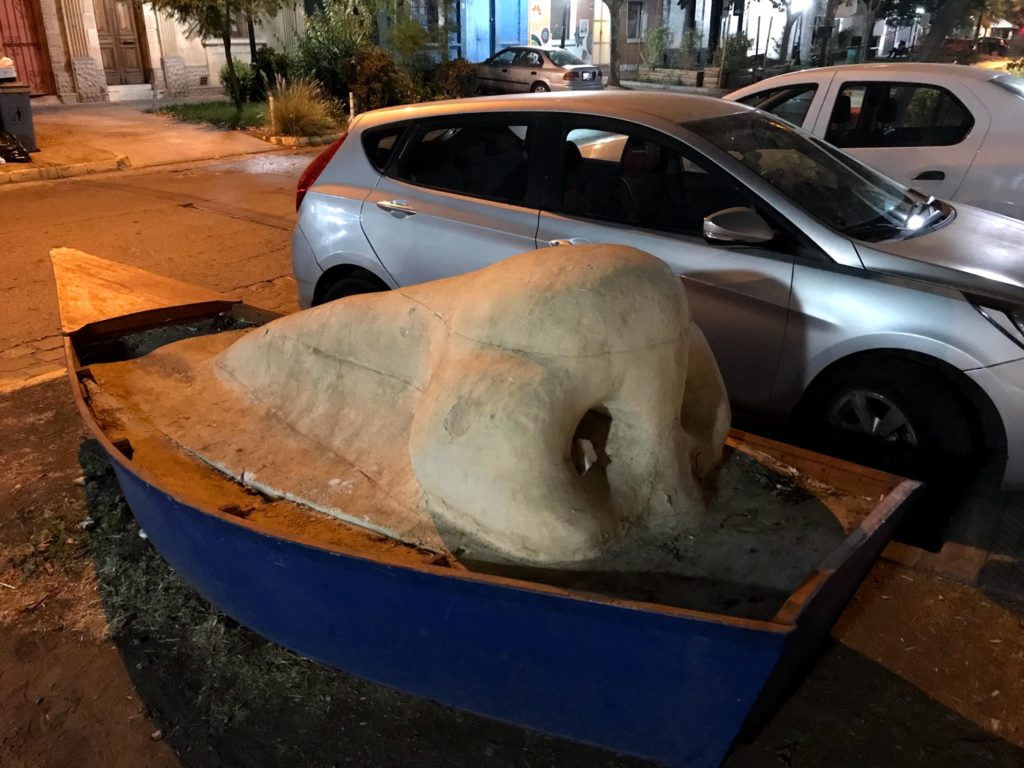
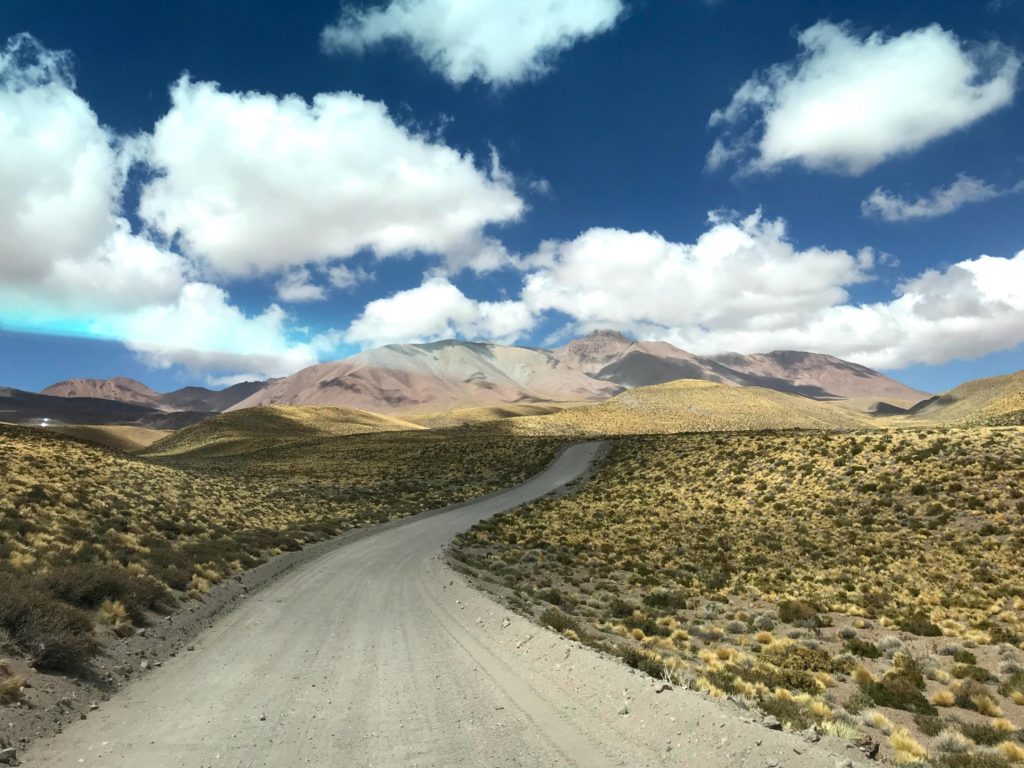





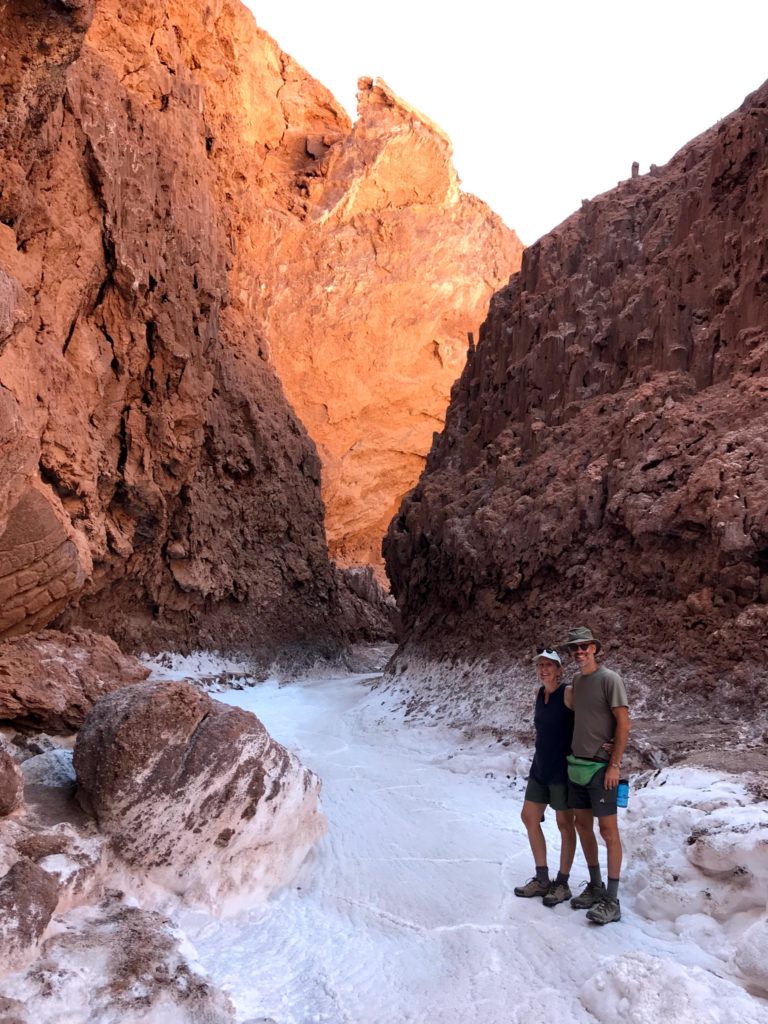



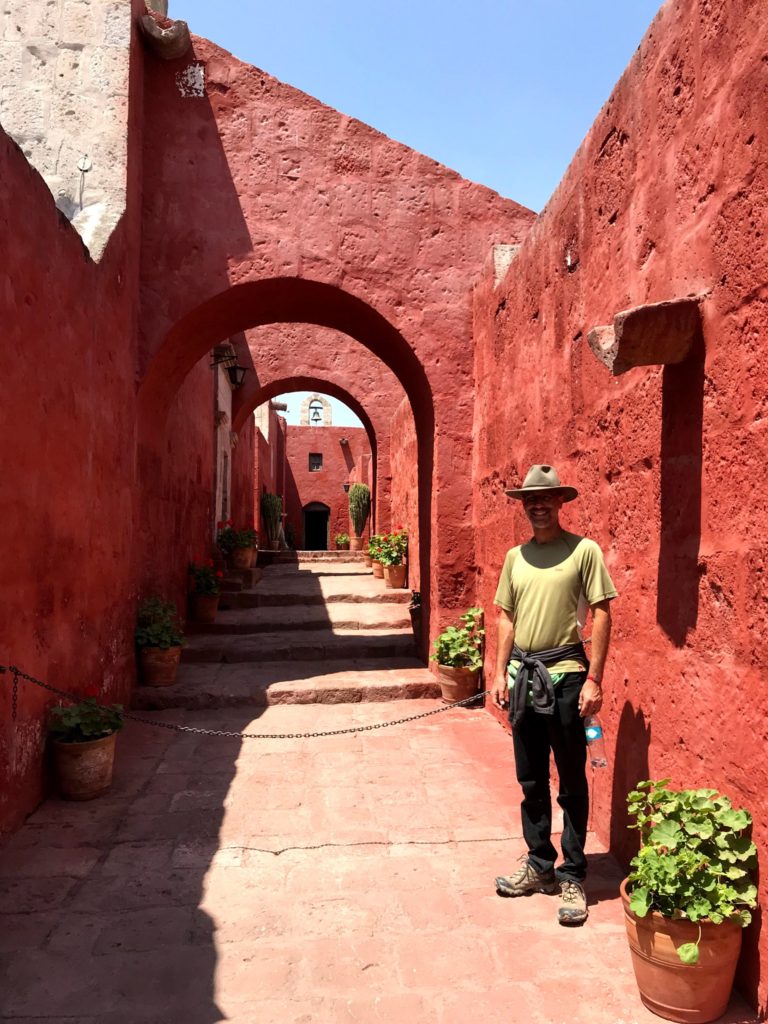


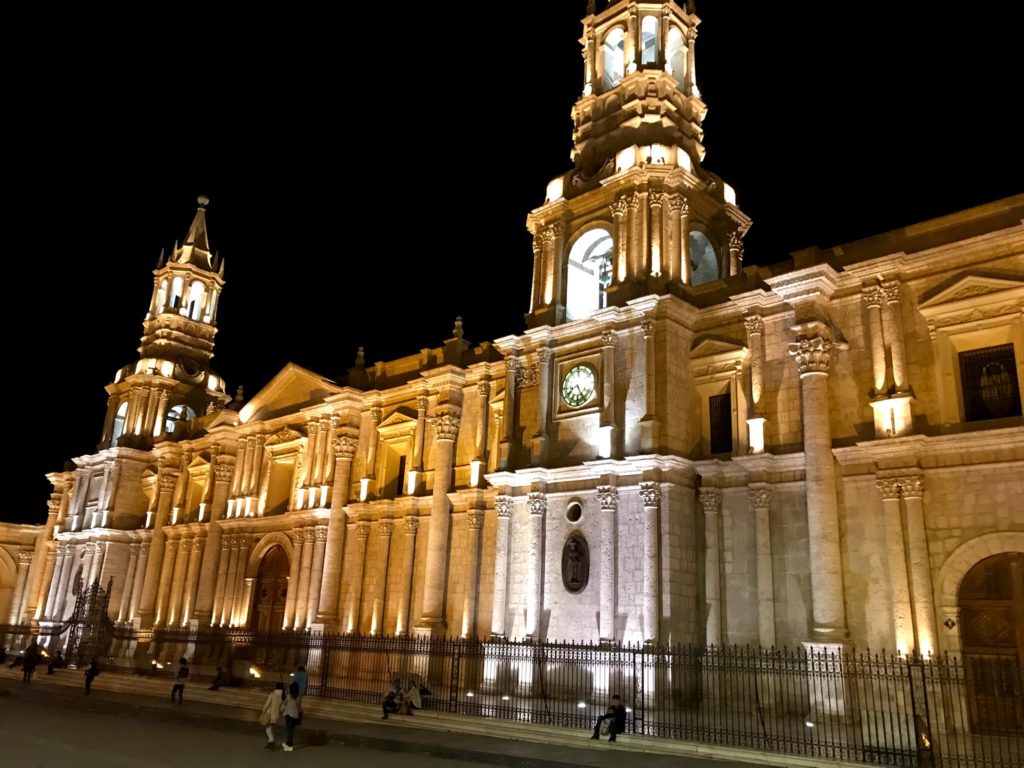

Do it up kids!!!! Wish we could be epic like you two!!! Lesley and Jim
Que maravilla todo lo que comparten y que emocionante ver como están disfrutando de cada uno de sus días de viaje.
Cuándo es el turno para Colombia? 🙂
Un abrazo a los dos…. que sigan disfrutando
Carolina
Gracias Carolina. Estamos por comenzar el Camino Inca! Emocionados.
I thought that one had to be in one’s 20s to do all that kind of stuff! Kudos to the young at heart!
Ramon and Marta
I have to say that long long bus rides are much harder on my aging bones these days, and I’m a lot more careful eating street food. Sorry we missed you in January.
Have a great hike. Wish I could be there.
Thanks Ted. We wish you could join us. You’d love it here!